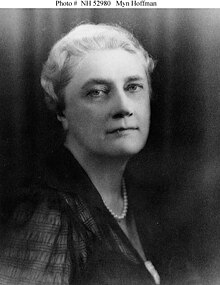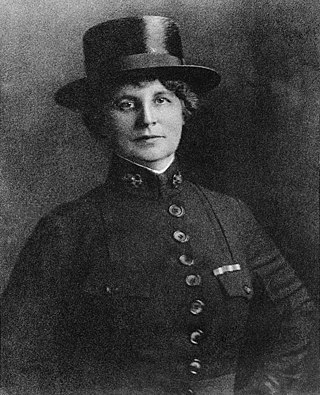
Lenah H. Sutcliffe Higbee was a pioneering Canadian-born United States Navy military nurse, who served as Superintendent of the U.S. Navy Nurse Corps during World War I. She was the first woman to be awarded the Navy Cross.

The United States Navy Nurse Corps was officially established by Congress in 1908; however, unofficially, women had been working as nurses aboard Navy ships and in Navy hospitals for nearly 100 years. The Corps was all-female until 1965.
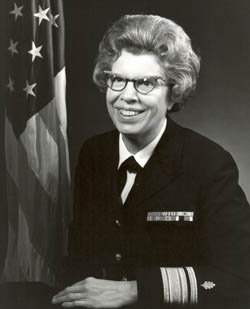
Alene Bertha Duerk became the first female admiral in the U.S. Navy in 1972. She was also the director of the U.S. Navy Nurse Corps from 1970 to 1975. She is a 1974 recipient of a Distinguished Alumni Award of Case Western Reserve University's Frances Payne Bolton School of Nursing.
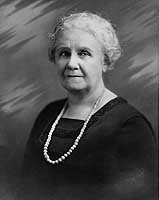
Esther Voorhees Hasson (1867-1942) was the first Superintendent of the United States Navy Nurse Corps. Prior to and after serving in the United States Navy Nurse Corps, she served as an Army nurse.

Josephine Beatrice Bowman was the third superintendent of the United States Navy Nurse Corps.

Sue S. Dauser was the fifth Superintendent of the United States Navy Nurse Corps, guiding the Nurse Corps through World War II.

Captain Nellie Jane DeWitt was the sixth and final Superintendent of the Navy Nurse Corps and became its first director.

Winnie Gibson (1902–2000) was the second director of the United States Navy Nurse Corps, serving in that position from 1950 to 1954.
Wilma Leona Jackson was an American nurse and military official who served as the third director of the United States Navy Nurse Corps, serving in that position from 1954 to 1958.

Rear Admiral Joan Marie Engel held the position as the 18th Director of the Navy Nurse Corps from September 1994 to August 1998. She concurrently served as deputy commander for personnel management in the Health Sciences, Education and Training Command, and later as assistant chief for Education, Training and Personnel.

Rear Admiral Maxine Conder was a United States Navy rear admiral who served as Director of the United States Navy Nurse Corps from 1975 to 1979.
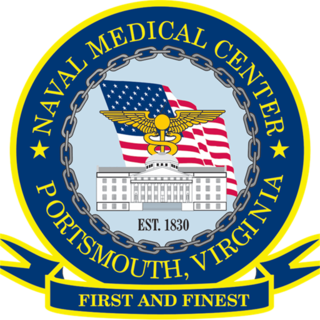
The Naval Medical Center Portsmouth (NMCP), formerly Naval Hospital Portsmouth, and originally Norfolk Naval Hospital, is a United States Navy medical center in Portsmouth, Virginia, United States. It is the oldest continuously running hospital in the Navy medical system.
Captain Ruth Agatha Houghton was an American nurse who served as the Director of the United States Navy Nurse Corps from 1958 to 1962.

Captain Ruth Alice Erickson (1913-2008) was the Director of the United States Navy Nurse Corps, serving in that position from 1962 to 1966. As a lieutenant in the Navy Nurse Corps, she witnessed the Japanese attack on Pearl Harbor, Hawaii on 7 December 1941.
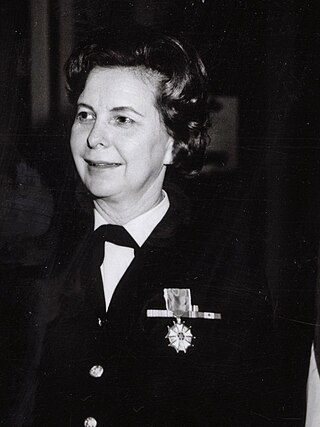
Captain Veronica M. Bulshefski was the Director of the United States Navy Nurse Corps, serving in that position from 20 April 1966 to 1 May 1970.

Laura Mae Cobb was a member of the United States Navy Nurse Corps who served during World War II. She received numerous decorations for her actions as a POW of the Japanese, during which she continued to serve as Chief Nurse for eleven other imprisoned Navy nurses—known as the "Twelve Anchors. She retired from the Nurse Corps as a Lieutenant Commander in 1947.

The United States Army Nurse Corps (USANC) was formally established by the U.S. Congress in 1901. It is one of the six medical special branches of officers which – along with medical enlisted soldiers – comprise the Army Medical Department (AMEDD). The ANC is the nursing service for the U.S. Army and provides nursing staff in support of the Department of Defense medical plans. The ANC is composed entirely of Registered Nurses (RNs) but also includes Nurse Practitioners.

Florence Aby Blanchfield was a United States Army Colonel and superintendent of the Army Nursing Corps, from 1943 to 1947. She was awarded the Distinguished Service Medal in 1945, and the Florence Nightingale Medal by the International Red Cross in 1951. In 1947 Blanchfield became the first woman to receive a military commission in the regular army.

The Sacred Twenty were a group of nurses who were the first female members to ever formally serve in the United States Navy representing the Nurse Corps. Officially formed in 1908, the Sacred Twenty made broad contributions during wartime, not only including training of field nurses and disease treatment, but also providing education programs for nurses abroad and professional publications to the field of nursing.

Sara Matilda Cox was an American nurse, born in Canada, one of the "Sacred Twenty", the first twenty women admitted to the United States Navy Nurse Corps. She was superintendent of nurses at the Naval Hospital in Washington, D.C. during World War I.
